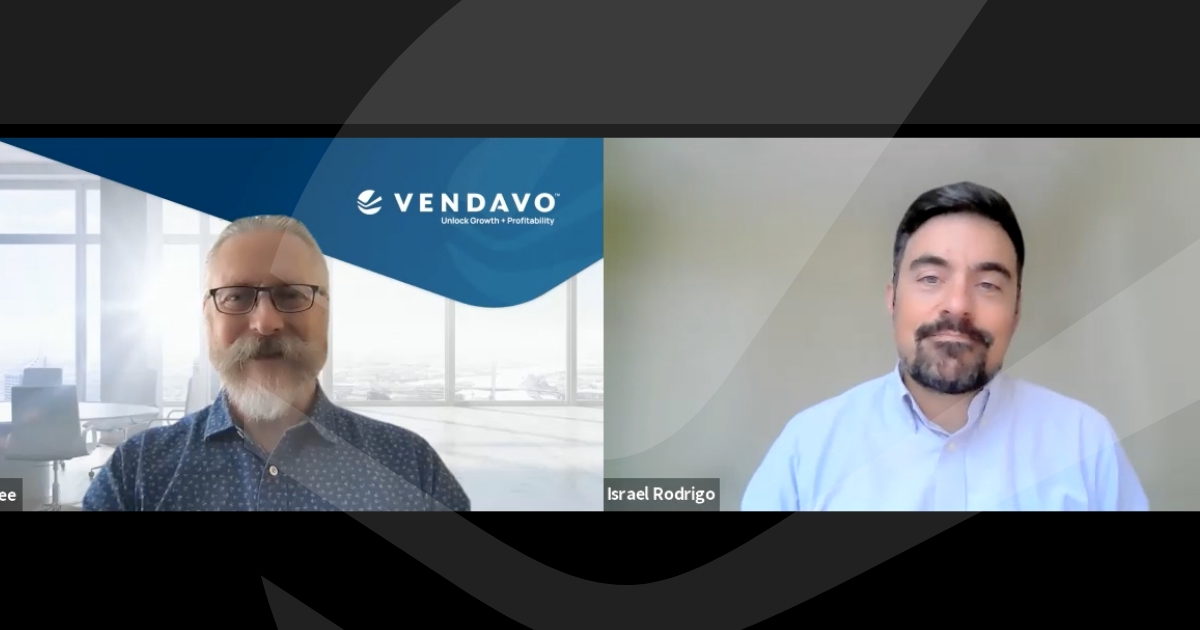It’s about the need to address one problem rearing its ugly head in global supply chains: How delays, product shortages, and rising costs are affecting businesses large and small across all geographies. So procurement organizations and consumers are confronted with an experience once rare in modern times: no stock available, and no idea when it will come in.
Mitchell Lee, Profit Evangelist at Vendavo, is joined by Israel Rodrigo, Business Consultant, to explore what pricing teams can do to leaven the cost-to-serve effects of shipping cost fluctuations. Here’s what they covered, and a bit more besides.
A Stress Test Waiting to Happen
Mitch: Back in March, as global shipping prices spiked and as many goods became scarce, conventional wisdom had it that the supply chain disruption we’re seeing was largely the result of a surplus of orders reflecting extraordinary shifts in demand.
Israel: Well, I think that for a globalized supply chain, in a way this was a stress test waiting to happen. There’s been the growth of international commerce and longer supply lines, the acceleration of ecommerce, and many companies adopted lean/just-in-time production to cut cost and boost profit, leaving minimal margin for error. For the global economy, shipping is at the center of the explanation.
If we look at the effects of the pandemic has had in global logistics is not only the change on demand, from finished goods to healthcare equipment, required more capacity available than before. Consumers in the United States and other wealthy countries had taken pandemic lockdowns as the reason to add gaming consoles, pastry blenders or exercise bikes to their homes, swamping the shipping industry with cargo, and exhausting the supplies of many components.
Container shortages paired with delays to unload cargo due to employee lockdown; Suez Canal blocked for a month, plus China shutting down container ports due to new outbreaks had snowballed…generating an incredible backlog…
It will be very interesting to see Black Friday’s dynamics this year.
The Trends Ahead?
Mitch: What do you see as a trend that’s taking shape?
Israel: There is no end in sight. So everybody should be assuming we are going to have an extended period of supply chain disruption.
Rational consumer behavior on shortages affecting demand (like with toilet paper) drive them to buy more, ahead of time, than they previously needed.
But from an enterprise perspective, I don’t think that we can look at cheap and reliable transportation as a key foundational aspect of international trade. Shipping a 40-foot container from Shanghai to Midwest used to cost six to seven thousand dollars, now it’s $26K, and added rail and trucking cost will most likely raise it to $35K.
If we think about the shortage of computer chips, Toyota announced this month that it would slash its global production of cars by 40 percent. Factories around the world are limiting operations — despite powerful demand for their wares — because they cannot buy metal parts, plastics, and raw materials.
This will have deep implications. There will be no more shifting production offshore looking for cheap materials and lower labor costs.
Inflation is Here to Stay (For Now)
Israel: First off: It’s a fact that inflationary dynamics are in action, and there’s no clear end in sight. Costs are changing, the availability of products is changing, impacting their perceived value. So, necessarily, pricing has to change.
How, though, can a seller mitigate the potential damage of these disruptions? Israel offered up a big range of insights.
Linking Product and Service Offering to Value Perceived and Price Paid
Israel: It’s important to develop customer intimacy. B2B buyers base purchase decisions on how well vendors or suppliers meet their demands. So delivering good customer experiences and cultivating intimacy with them is extremely important. In eCommerce, there’s an unrelenting need for accurate information about product availability, shipping, and inventory levels, as it’s the most strategic element in driving bottom-line customer satisfaction.
Some steps you can take?
- Rationalize product portfolios: Customers who are willing to shop in-stock product show a higher willingness to pay, due to the tradeoff between availability, price, and value.
- Same day delivery is king, delivering instantaneous customer satisfaction. Where are the opportunities to show that kind of agility and show you’re still agile and responsive, customer-focused.
- Freight mechanisms can be a deal attribute; think, too, about other operational improvements such as shipment consolidation, outsourcing, deferred services, service level differentiation. Remember that nobody questions that there’s a need for price revisions but don’t reduce service if you increase price. Inflation presents an opportunity to stand apart from competitors on this front!
- Behavioral discounts: Use them to reduce order fragmentation or incentivize larger orders. Levy adders or surcharges on shipping for inefficient behaviors on the part of buyers.
- Rethink next-day delivery commoditization; understand where special operations may deviate from SOP. Did the customer ask for it?
Investing in Visibility of Cost-to-Serve
Israel: You should work at uncovering deal improvement opportunities. Typically, a lot more discipline and scrutiny go into understanding the processes around discounting and pricing, but there’s less attention given to properly assessing the cost to serve customers.
Obviously, cost-to-serve is comprised of all non-product costs (e.g., freight cost, warehousing cost, packaging, etc. technical service, installation service) that are specific to serving a customer. Logistic costs are a huge component of this and, depending on the industry, recovering those costs and reflecting them in how you price your product and services can literally become a matter of survival.
Why? Simply put, CTS is always going to subtract profit from all your transactions.
The price waterfall is a structured framework for representing price and profitability. So a properly designed pricing and margin waterfall – that calls out the impact of all costs – is the most important output of commercial excellence requirements.
Logistics cost savings initiatives have been traditionally exhausted and have often been optimized with a lot of outsourcing of logistics needs to carriers and third-party providers. So useful data should be readily available. So, too, should be a legacy of standard network costs allocated using activity-based cost models. In both cases, the most effort typically required is to allocate them to customer, product, shipment, and line item.

Not having a good price waterfall when it relates to understanding your cost-to-serve leads to:
- Not having a single owner of operational costs
- Failure to identify expensive ship-to locations (think about returns)
- Failure to quantify difference between shipping modes
So if we can break out and define Freight Charges and Freight Costs before the customer pocket price and pocket margin, you can see two key benefits:
- It allows better tracking of cost-to-serve recovery
- It allows for more accurate comparison of customer price points
Similar logic applies to developing other CTS elements not related to freight charges, such as financing and off-invoice discount programs (payment terms, rebates, promotional programs, and so on) which may be affecting a customer’s price after the sale.
Best Practices for Measuring and Tracking Cost-to-Serve Recovery
Mitch: This is a fascinating area, and one that’s overlooked by a lot of companies.
Israel: Yes, absolutely. Some companies let legitimate recoverable freight expenses fall between the cracks, so freight recovery is a primary driver of pricing leakage in many industries. So being able to optimize this can have a huge impact on the bottom line. Thus, it’s paramount to develop and arm yourself with a comprehensive view of KPIs across various dimensions in the organization.
- Track freight cost at the product, ship-to and ship mode level
- Search out valuable insights into cost-to-serve effectiveness
- Define recovery ratios
- Understand all value-added charges / value-added service costs
- Routinely identify and analyze most expensive ship-tos while enforcing contractual obligations and rationalizing SLAs
- Capture and document competitive situations; is the price on a delivered basis? Or at the plant? What are lead times? By truck, rail, air?
Look for opportunities to improve in certain transactions, even if not in all. Define your targets and policies for freight, put mechanisms in place to trigger approval for exceptions, and quantify the impact of waived surcharges.

